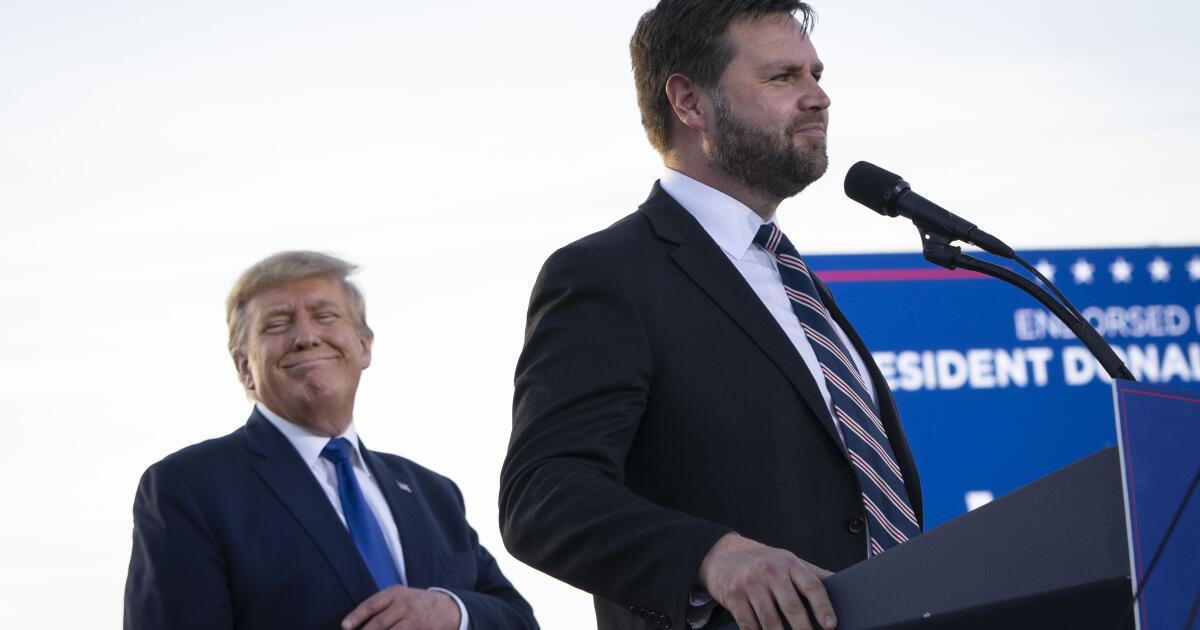Health
AI helps dentists catch more cavities and gum disease: It’s ‘unbiased’ and gives ‘more accurate’ diagnoses
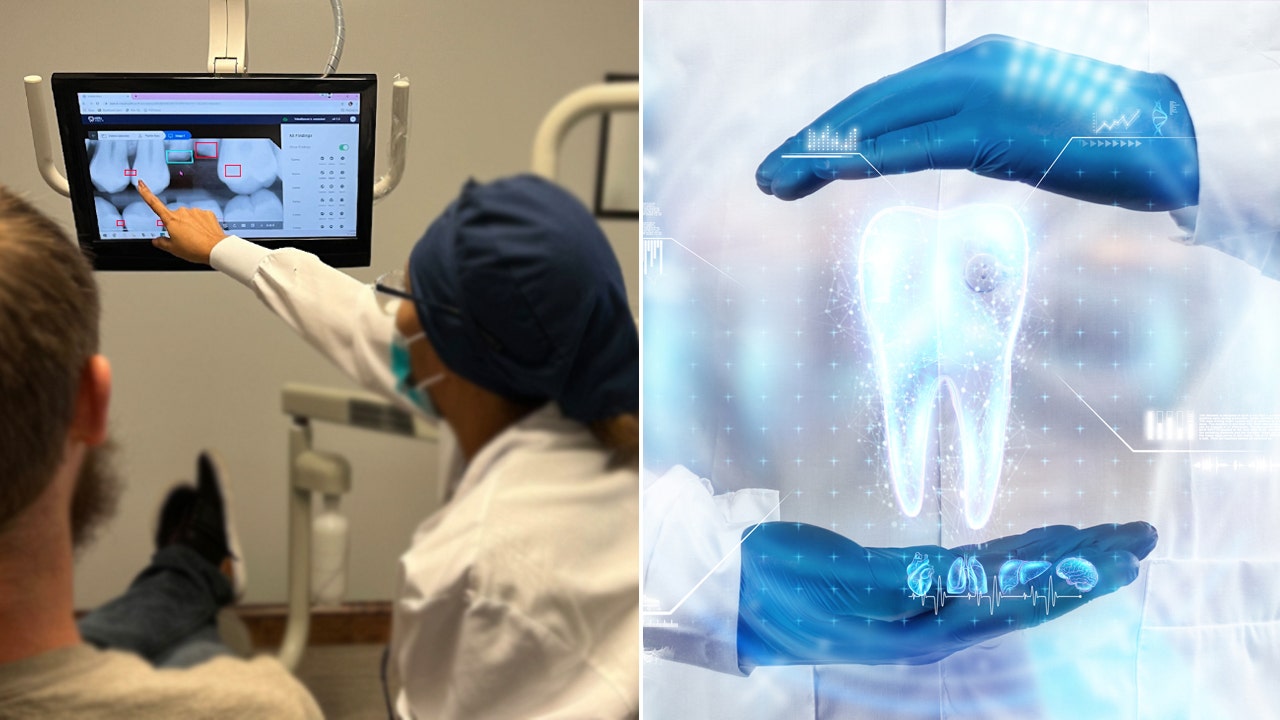
Gum disease (periodontitis) affects more than 47% of Americans — or nearly 65 million people — including former Major League Baseball player Alex Rodriguez, who recently announced he has the condition.
As artificial intelligence continues to expand into dental and medical uses, dentists are relying on the technology to quickly and accurately detect and prevent periodontitis, decay, bone loss and other gum health issues.
Now, VideaHealth, a medical technology company in Boston, has created a dental AI platform that is available to 90% of dental practices in the U.S., the company said.
BE WELL: FLOSS YOUR TEETH DAILY FOR BETTER HEART HEALTH
The FDA-approved system analyzes patients’ X-ray images using an algorithm trained on hundreds of millions of data points — more than 50 times the number of X-rays most dentists see in their lifetime, according to the company — to provide treatment recommendations for patients.
“VideaAI lets dentists examine X-rays for cavities and radiographic bone level findings, comparing them against our AI algorithms,” Boston-based Florian Hillen, VideaHealth’s founder and CEO and an AI research fellow at Harvard Business School, told Fox News Digital.
Dentists are using VideaHealth’s technology to quickly and accurately detect and prevent periodontitis, decay, bone loss and other gum health issues. (VideaHealth/iStock)
With traditional dental screenings, X-ray analysis is used for diagnosis and treatment planning — but 50% of dental decay is missed and 30% results in wrongful diagnosis, he also said.
His company’s system “identifies 43% more cavities and reduces the error rate of misdiagnosis by 50%, and also reduces false positives by 15%,” he said.
“Our analysis enables more accurate diagnoses and better preventative care.”
AI a ‘great equalizer’ for dentists, patients
In addition to enabling faster, more accurate findings, VideaAI also gives dentists the data and confidence to engage better with their patients, Hillen said.
THESE ARE THE WORST DENTAL MISTAKES YOU CAN MAKE FOR YOUR TEETH
“It also helps dentists achieve more streamlined workflows in their offices, resulting in reduced human error and mistakes,” he added.
For patients, the AI tool helps to improve their dental health by catching cavities, abscesses, lesions and oral diseases before these issues evolve into much larger problems.
“With the right dental care, the risk of medical complications from diabetes, heart disease and other illnesses can be significantly decreased,” Hillen said.
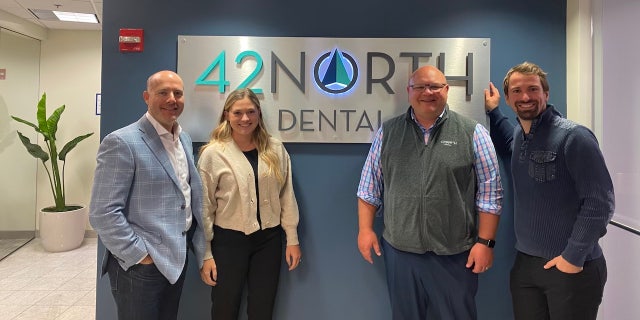
VideaHealth, a medical technology company in Boston, has created a dental AI platform that’s now available to 90% of dental practices in the U.S. Its CEO, Florian Hillen, is pictured at far right, while second from right is Michael A. Scialabba, DDS, of 42 North Dental, which is using the platform. (VideaHealth)
AI also helps increase patients’ trust by showing them “the complete picture,” Hillen said.
“Today, a lot of dental relationships are asymmetric,” he said. “Patients don’t know if they need the X-rays or the treatment plan — and sometimes they want a treatment they don’t need.”
Historically, patients don’t always accept their dentists’ recommendations, Hillen pointed out — “the majority of the time, they don’t,” he said.
As a result, the dental issues continue to worsen until there is a significant issue.
Fifty percent of dental decay is missed and 30% results in wrongful diagnosis.
“You wouldn’t walk around with an infection in your finger — you’d treat it and deal with the issue immediately,” he said.
CHATGPT AND HEALTH CARE: COULD THE AI CHATBOT CHANGE THE PATIENT EXPERIENCE?
“So why do so many adults walk around with mouth infections? And do they even know they’re increasing their risk of diabetes, high blood pressure, cardiac issues and dementia?”
Hillen said he sees AI as “the great equalizer” in that it can provide an unbiased, data-driven analysis that the dentist and patient can review and discuss together.
“With AI, findings are easier to explain to patients, who trust their dentists more — which means patients are more likely to move forward with necessary treatments rather than delay care,” he said.
VideaAI in action
A dental service organization in Boston called 42 North Dental was one of the earliest adopters of the VideaAI tool.
“We’re big believers in technology and aiding our doctors to provide the best care possible,” the company’s chief clinical officer, Boston-based Michael A. Scialabba, DDS, told Fox News Digital.
“AI is essential for practitioners because it is unbiased, and it provides us with the opportunity to identify lesions that we might miss without it.”
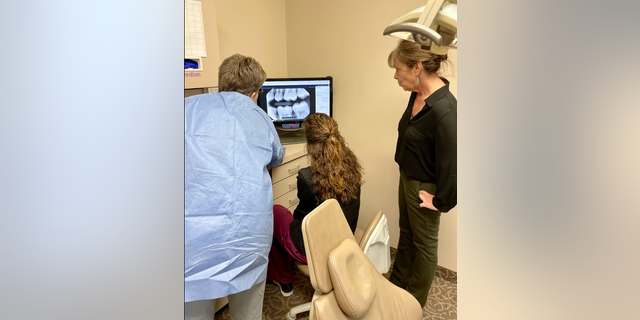
“VideaAI lets dentists examine X-rays for cavities and radiographic bone level findings, comparing them against our AI algorithms,” the company’s CEO, Florian Hillen, told Fox News Digital. (VideaHealth)
When 42 North Dental started reviewing dental AI options, the dentists first examined 100+ images with the naked eye.
When they viewed those same images again with VideaAI, they found nearly 20% more cavities, Scialabba said.
The practice has also seen its treatment acceptance rates increase by 20%.
“The common misconception is that dentists overdiagnose, but this is not accurate,” Scialabba said.
The practice has also seen its treatment acceptance rates increase by 20%.
Rather, he said, dentists “are conservative, and underdiagnosis is the bigger issue. VideaAI can help us see issues before they are visible to the naked eye, so we can offer recommendations and stave off bigger issues.”
AI TECH AIMS TO HELP PATIENTS CATCH DISEASE EARLY, EVEN ‘REVERSE THEIR BIOLOGICAL AGE’
Implementing AI has helped 42 North Dental prevent mistakes, reduce missed diagnoses and improve oral health by detecting cavities and early bone loss, which is an indication of gum disease, Scialabba said.
“This will help drive better overall health and reduce instances of chronic diseases,” he said. “Increasingly, AI in dentistry can help detect and prevent issues ranging from diabetes to cardiovascular disease and early-onset dementia.”
He added, “This isn’t aspirational — this is the truth.”
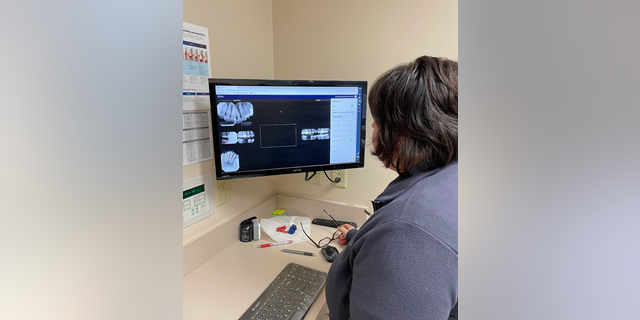
While dental AI has been shown to improve outcomes for patients and efficiency for practices, it’s not meant to replace trained professionals, experts say. (VideaHealth)
The practice’s patients have also enjoyed having a clearer, more visual window into their own dental health, Scialabba said.
“Patients now have an unbiased and data-backed understanding of their X-rays and diagnosis,” he said. “AI takes out the emotion and bias for both the dentist and the patient, and provides a straightforward way to talk about treatment plans using just the facts.”
AI IN DENTISTRY: RESEARCHERS FIND THAT ARTIFICIAL INTELLIGENCE CAN CREATE BETTER DENTAL CROWNS
He added, “This approach puts more control into the hands of patients, so they can make the smartest and most meaningful decision for their oral care.”
More than a year after implementing VideaAI, 42 North Dental is now in the process of rolling out the tech to all of its locations.
Not a replacement for ‘human experience’
While dental AI has been shown to improve outcomes for patients and efficiency for practices, it’s not meant to replace trained professionals, experts say.
“Dentists and hygienists will always remain a critical part of the equation in disease diagnostics, as they have the context of years of experience, patient histories and in-person examinations,” Scialabba told Fox News Digital.
“AI in dentistry can help detect and prevent issues ranging from diabetes to cardiovascular disease and early-onset dementia.”
“At the end of the day, it’s a combination of AI and using human experience — a tool for the dentists to use,” he added.
CLICK HERE TO SIGN UP FOR OUR HEALTH NEWSLETTER
Beyond just analyzing X-rays, Scialabba said that clinicians serve as their patients’ collaborators, advisers, educators and partners — and AI helps them deliver the best care possible.
“The clinical experience and insights dental professionals bring to the table cannot be underestimated, but the AI offers objective, consistent observations to consider when making their decisions and recommendations,” he added.

Health
Better Than Ozempic? Doctors Say These Medications Are Better for Weight Loss Than the Popular Semaglutide

Sign Up
Create a free account to access exclusive content, play games, solve puzzles, test your pop-culture knowledge and receive special offers.
Already have an account? Login
Forgot your password?
Get back to the Sign In
Use left and right arrow keys to navigate between menu items.
Use escape to exit the menu.
Health
Honeybees can detect lung cancer, researchers say
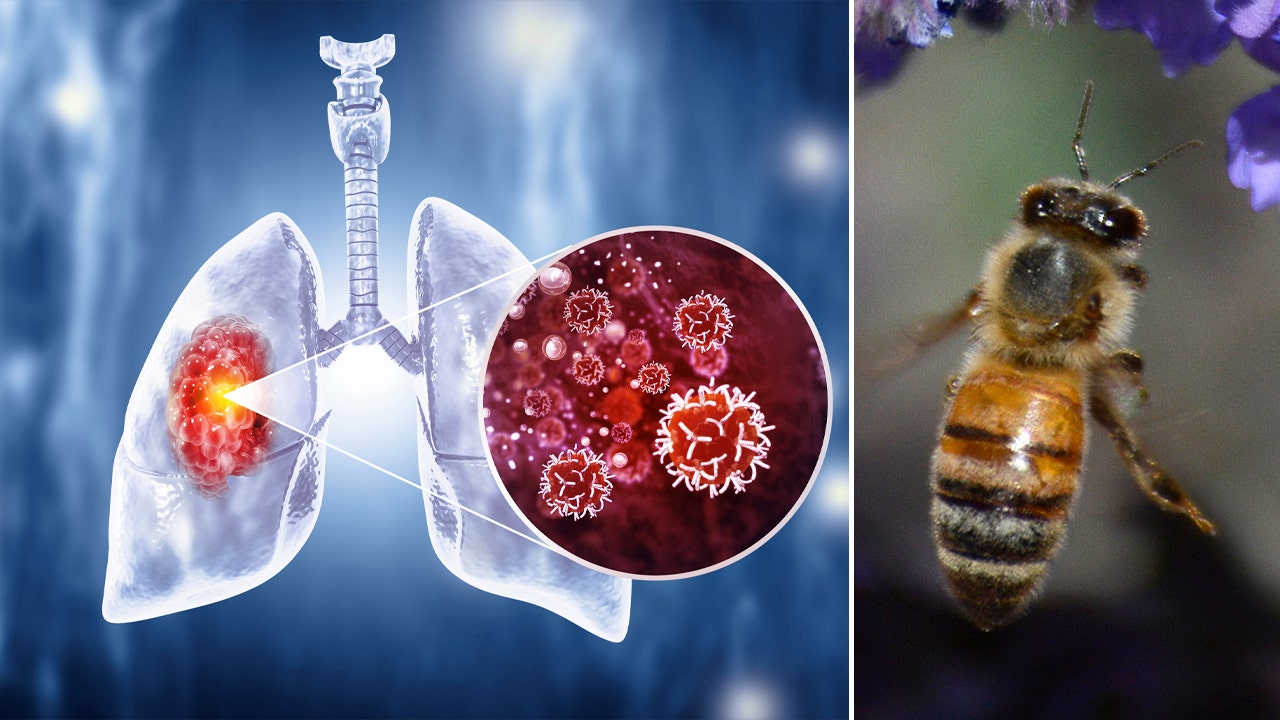
What happens when you pair honeybees and halitosis? Potentially a life-saving new method to screen for cancer, according to one study.
Researchers at Michigan State University have learned that honeybees can detect chemicals associated with lung cancer in human breath. The insects were able to sniff out human lung cancer biomarkers with a remarkable 82% success rate, according to a study published in the journal Biosensors and Bioelectronics.
“These results indicate that the honeybee olfactory system can be used as a sensitive biological gas sensor to detect human lung cancer,” the study authors wrote.
“Insects have an amazing sense of smell the same way dogs do,” said MSU professor Debajit Saha, according to an MSU news release.
YOUNG VAPER WHO REQUIRED DOUBLE LUNG TRANSPLANT SHARES WARNINGS AS E-CIGARETTE SALES RISE
A honeybee drinking nectar from a flower in Markham, Ontario, Canada. (Creative Touch Imaging Ltd./NurPhoto via Getty Images)
Saha, an assistant professor in the College of Engineering and MSU’s Institute for Quantitative Health Science and Engineering, sought to determine whether honeybees could distinguish chemicals in a healthy person’s breath from that of someone sick with lung cancer.
His team developed a “recipe” for a synthetic breath mixture that contained six compounds present in the breath of someone with cancer and a synthetic “healthy” breath mixture.
“It took a steady hand to create the recipe,” said Elyssa Cox, Saha’s former lab manager. “We tested the synthetic lung cancer versus healthy human breath mixtures on approximately 20 bees.”
The researchers placed each live bee in a custom 3D-printed harness and attached a tiny electrode to its brain to measure activity.
SOME BREAST CANCER PATIENTS COULD BE AT RISK OF ANOTHER TYPE OF CANCER, STUDY REVEALS
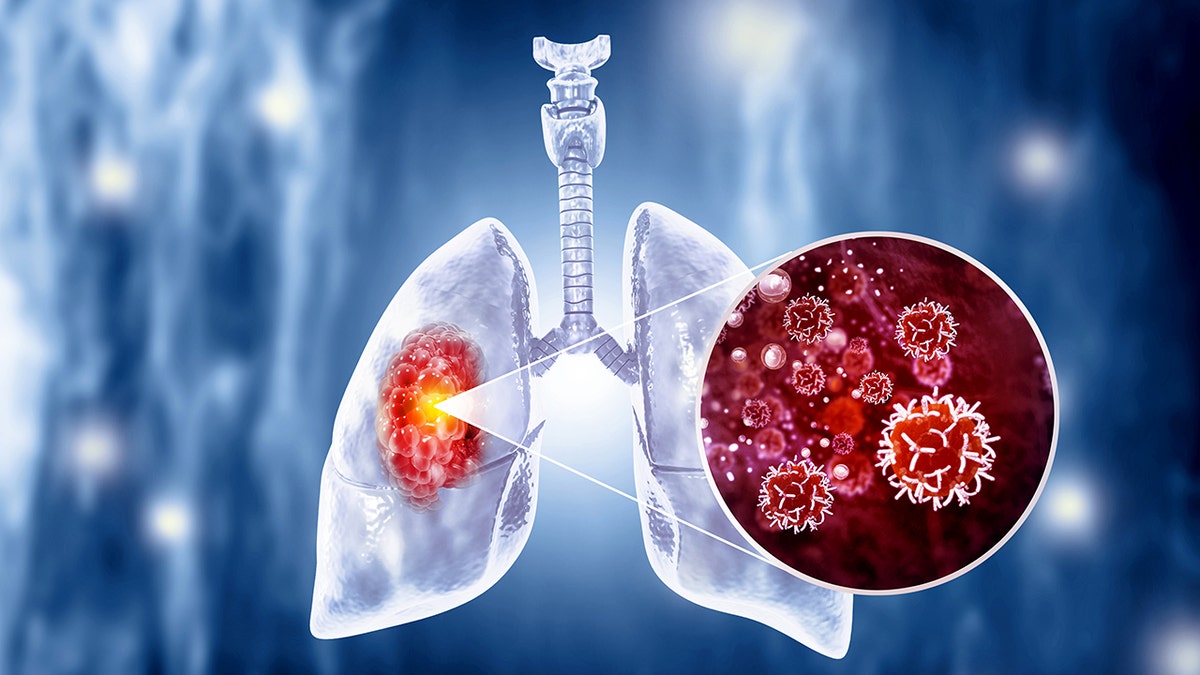
Lung cancer is the leading cause of cancer death worldwide. An estimated 235,580 people will be diagnosed with lung cancer in 2024 in the U.S., according to the Lung Cancer Research Foundation. (Mohammed Haneefa Nizamudeen/iStock)
“We pass those odors on to the antenna of the honeybees and recorded the neural signals from their brain,” said Saha. “We see a change in the honeybee’s neural firing response.”
The researchers found that the bees were able to detect the cancer-indicating compounds even in small amounts.
“The honeybees detected very small concentrations; it was a very strong result,” said Saha. “Bees can differentiate between minute changes in the chemical concentrations of the breath mixture, which is in the parts per 1 billion range.”
The bees also could tell the difference between the synthetic lung cancer breath and healthy breath.
UK TO INTRODUCE BILL TO PHASE OUT LEGAL SALE OF TOBACCO
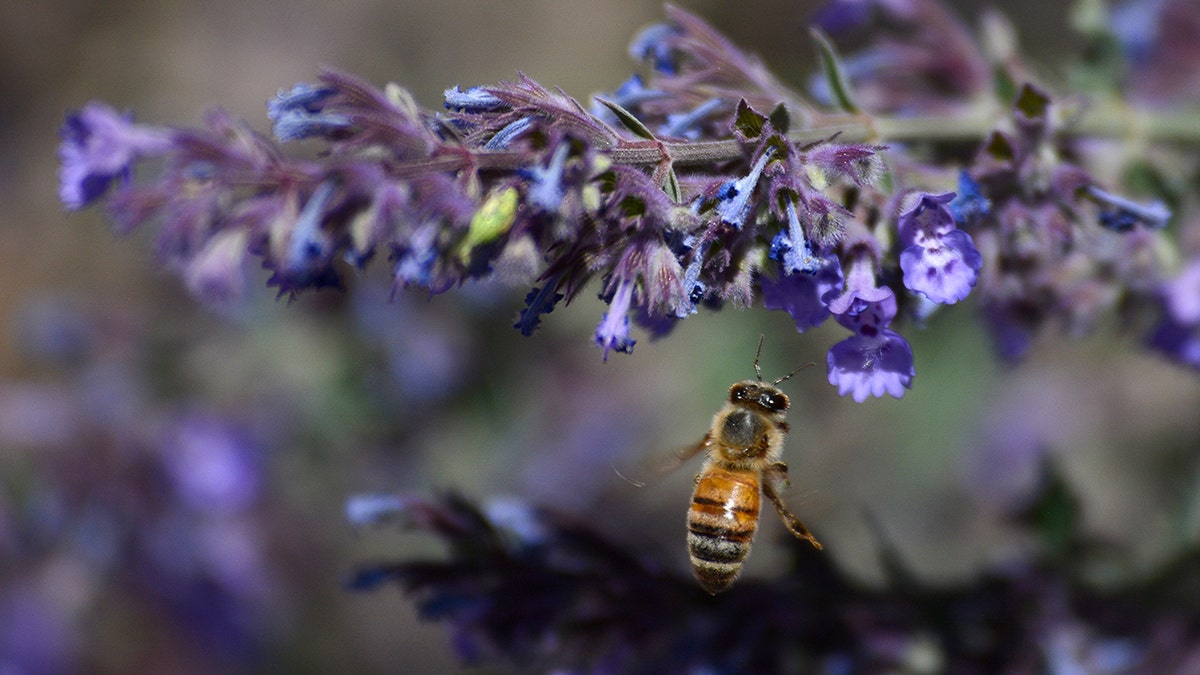
A honey bee visits a blooming catmint plant growing in Santa Fe, New Mexico. (Robert Alexander/Getty Images)
Scientists hope this research will lead to the development of a sensor based on a honeybee brain that can be used to test human breath for the presence of lung cancer.
“What’s amazing is the honeybees’ ability to not only detect cancer cells, but also distinguish between cell lines of various types of lung cancer,” said Autumn McLane-Svoboda, a graduate student on Saha’s team. “The future implications for this are huge, as our sensor could allow for patients to receive specific cancer diagnoses quickly, which is imperative for correct treatment routes.”
Lung cancer is the leading cause of cancer death worldwide. An estimated 235,580 people will be diagnosed with lung cancer in 2024 in the U.S., according to the Lung Cancer Research Foundation.
Smoking is the leading risk factor for lung cancer and is responsible for 80% of lung cancer deaths.
Early detection of high-risk lung cancer can reduce the chance of death by up to 20%.
Health
COVID vaccine companies told to focus on KP.2 variant for fall shots, per FDA announcement
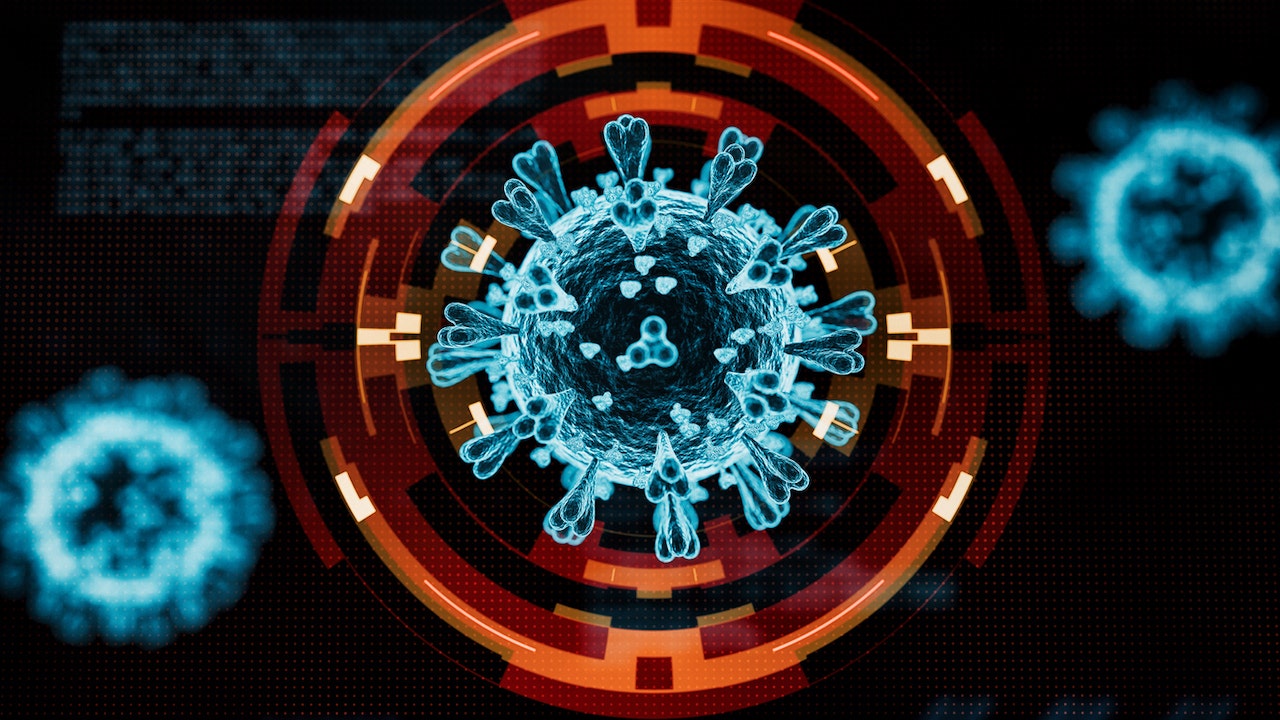
The U.S. Food and Drug Administration (FDA) has recommended that COVID vaccine manufacturers update their formulas for fall doses, in an attempt to target the KP.2 strain of the JN.1 variant.
The Thursday announcement came just a week after the agency’s Vaccines and Related Biological Products Advisory Committee (VRBPAC) voted to recommend a “monovalent JN.1-lineage vaccine” at its June 5 meeting.
As of the end of March 2024, the KP.2 variant was responsible for just 4% of infections in the U.S., according to the COVID Data Tracker from the Centers for Disease Control and Prevention (CDC).
CDC WARNS OF ‘DUAL MUTANT’ FLU STRAIN THAT COULD EVADE ANTIVIRAL DRUGS: ‘NEED TO CLOSELY MONITOR’
Meanwhile, over 50% of infections at that time were attributed to its parental strain, JN.1.
Just a few weeks later, KP.2 is now the cause of around 28% of infections, while the JN.1 variants have largely dropped in prevalence, the tracker shows.
The U.S. Food and Drug Administration has recommended that COVID vaccine manufacturers update their formulas for fall doses, in an attempt to target the KP.2 strain of the JN.1 variant. (iStock)
Dr. Marc Siegel, clinical professor of medicine at NYU Langone Medical Center and a Fox News medical contributor, recently spoke with Dr. Peter Marks, director of the Center for Biologics Evaluation and Research (CBER) at the Food and Drug Administration, about the new vaccine formulations.
“It makes sense to target the KP.2 strain because it is becoming the predominant strain — it is surging in California and will spread across the country,” Siegel told Fox News Digital.

KP.2 is now the cause of around 28% of infections, while the JN.1 variants have largely dropped in prevalence, CDC Tracker data shows. (iStock)
The KP.2 strain is “highly immunoevasive,” the doctor warned — which means that immunity from previous variants and subvariants don’t offer much protection.
COVID-FLU COMBO VACCINE SHOWS ‘POSITIVE’ RESULTS IN PHASE 3 TRIALS, MODERNA SAYS: A ‘TWO-FOR’ OPTION
“On the other hand, the vaccine will cause a production of immune cells and antibodies that will continue to protect you against previous variants and subvariants,” Siegel added.

The updated vaccine is especially important for high-risk groups, those who have chronic illnesses, the elderly and anyone who comes in contact with them, according to doctors. (iStock)
It is especially important for high-risk groups, those who have chronic illnesses, the elderly and anyone who comes in contact with them, according to the doctor.
CLICK HERE TO SIGN UP FOR OUR HEALTH NEWSLETTER
In a statement to Fox News Digital, vaccine maker Novavax — which makes protein-based vaccines — said the company “just filed” its application for a JN.1 COVID vaccine.
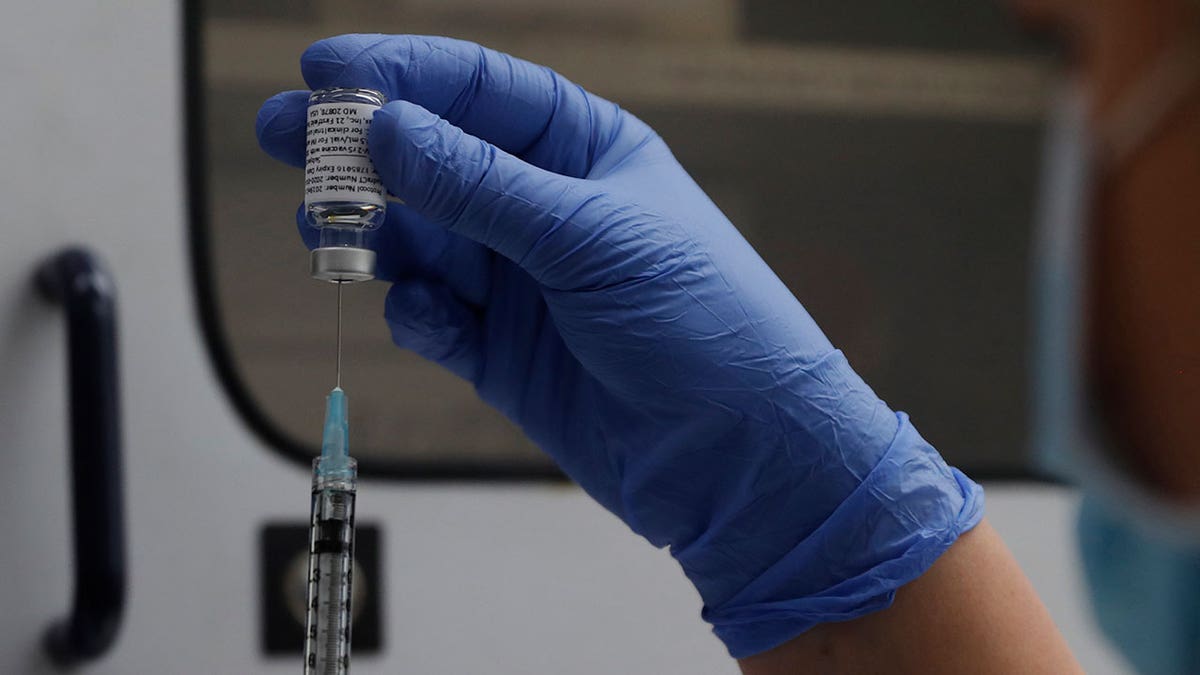
A vial of the Phase 3 Novavax coronavirus vaccine is seen ready for use in the trial at St. George’s University hospital in London, on Oct. 7, 2020. (AP Photo/Alastair Grant, File)
“Novavax’s updated JN.1 COVID-19 vaccine is active against current circulating strains, including KP.2 and KP.3,” the company said in a press release.
“The submission is in line with guidance from the U.S. FDA, European Medicines Agency (EMA) and the World Health Organization (WHO) to target the JN.1 lineage this fall.”
For more Health articles, visit www.foxnews/health.
Fox News Digital reached out to Pfizer and Moderna — both of which produce mRNA-based vaccines — requesting comment on their plans for fall formulations.
-

 News1 week ago
News1 week agoIsrael used a U.S.-made bomb in a deadly U.N. school strike in Gaza
-

 World1 week ago
World1 week agoFrance to provide Ukraine with its Mirage combat aircraft
-

 World1 week ago
World1 week agoRussia-Ukraine war: List of key events, day 833
-

 Movie Reviews1 week ago
Movie Reviews1 week agoInsane Like Me? – Review | Vampire Horror Movie | Heaven of Horror
-

 News1 week ago
News1 week agoNonprofit CFO Accused of 'Simply Astonishing' Fraud
-

 Politics1 week ago
Politics1 week agoGeorge Clooney called White House to complain about Biden’s criticism of ICC and defend wife’s work: report
-

 Politics1 week ago
Politics1 week agoNewson, Dem leaders try to negotiate Prop 47 reform off California ballots, as GOP wants to let voters decide
-

 World1 week ago
World1 week ago‘Bloody policies’: Bodies of 11 refugees and migrants recovered off Libya


